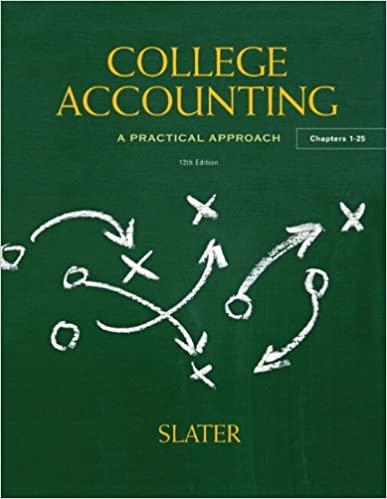Question
Johannsen Steel Company (JSC) was established by three Johannsen brothers in 1928 in Pittsfield, Rhode Island. The brothers began JSC by concentrating on high-quality, high-carbon,
Johannsen Steel Company (JSC) was established by three Johannsen brothers in 1928 in Pittsfield, Rhode Island. The brothers began JSC by concentrating on high-quality, high-carbon, and high-margin steel wire. Products included "music wire" for instruments such as pianos and violins; copper, tin, and other coated wires; and high tensile-wire for the newly emerging aircraft industry. JSC even pioneered new types of wire. Throughout the 1930s and 1940s JSC prospered while maintaining its reputation for high-quality products and in-house design/construction of its own equipment. In 1946, the last remaining Johannsen brother sold the company to West Virginia Steel for $4 million. For its investment, West Virginia Steel (WVS) obtained three Johannsen steel millslocated in Pittsfield, Rhode Island (500 employees), Akron, Ohio (100 employees), and Los Angeles (16 employees)and two steel-wire warehousesone in Chicago (8 employees) and one in Los Angeles (4 employees). WVS kept Johannsen completely intact as a wholly owned subsidiary. The 1940s and 1950s witnessed increasing JSC sales to the U.S. military and to U.S. automakers and tire makers. JSC also sold wire for use in staples, nails, cables, cookie cutters, steel brushes/wire wheels, and electrical products, leading to a continued climb in sales and profits. The year 1960 was important for the U.S. steel industry. A 14-week strike caught steel customers off guard. With stocks nearly exhausted, customers throughout the United States turned to the Japanese. They found the quality, price, and even delivery of steel acceptable. No longer was competition from offshore steel makers insignificant. The combination of offshore competition and a productivity-minded economy drove steel prices down to very competitive levels throughout the 1960s and 70s. Attention in the industry and in JSCturned toward cost cutting and sales expansion to maintain profit levels. Joe Thomas, formerly the sales manager of JSC, became its president in 1978, and he emphasised sales expansion. Indeed, sales grew by nearly 2 million pounds per year through the 1970s and 1980s. The growth in sales revenue paralleled the tonnage sold. However, after-tax profits on sales throughout the late 1980s were never above 2%. Page 4 of 6 Because profits had been meagre since the mid-1970s for both JSC and WVS, the "mother corporation" was spending little on capital investment unless a 40% return on investment (ROI) before taxes could be demonstrated. WVS had other restrictions on its JSC subsidiary. Sixty percent of JSC's total purchase of steel rod (the raw material for steel wire) had to be purchased from WVS, even though it was well acknowledged throughout the industry that WVS's steel rod was the lowest in quality. Also, the smaller size of WVS rod coils (300 lb.), compared to the newest industry sizes from Bethlehem Steel (1500 and 3000 lb.), increased the number of machine setups and production cost. To use up their quota of WVS steel rods and spread overhead costs over more tonnage (thusreducing allocated overhead per ton), Joe Thomas ordered his sales people to increase sales at least 100 percent per year. And they did. Orders and revenue for the more common grades of steel wire products such as staple wire, stitching wire, tire bead wire, and brush wire continued to increase. The prices of these steel-wire products continued to fall as the Japanese, in particular, manufactured these products with greater efficiency. JSC maintained its reputation for high quality throughout the 1970s and 80s. It won prestigious NASA and computer-industry contracts and still produced "music wire" and other high-carbon grades. The percentage of these high-quality/high-margin sales to total sales continued to decrease, however. Wire-drawing machinery now was so sophisticated that JSC no longer designed or produced its own machines. In fact, by the 1980s JSC often purchased used equipment. Although several new JSC product innovations had appeared every few years, these were not significant. To control costs, the R&D staff had not increased in size or funding for many years. JSC had much of its original equipment (some over 50 years old), which was in good working order. However, equipment and building maintenance costs continued to rise. The sales salaries were low, with 6% commission paid on all sales generated. To cut costs, sales staff travel was considerably reduced. In conversation with John Green, JSC's operations manager, Joe Thomas was overheard to say; "I can't understand why our profits are now at zero. Sales are up again. Scrap rates are unreasonable (15%). Even our raw material costs per ton shipped are lower. John, if we can just lower our scrap rates and maintenance costs per shipped ton and spread our fixed overhead costs over more tonnage, I am sure we can pull ourselves out of this."
Question As a consultant to JSC, write a brief to the Operations Manager, on the TQM concepts the organisation could use to improve the quality of their products and reduce the scrap rate of 15%.
Step by Step Solution
There are 3 Steps involved in it
Step: 1

Get Instant Access to Expert-Tailored Solutions
See step-by-step solutions with expert insights and AI powered tools for academic success
Step: 2

Step: 3

Ace Your Homework with AI
Get the answers you need in no time with our AI-driven, step-by-step assistance
Get Started


